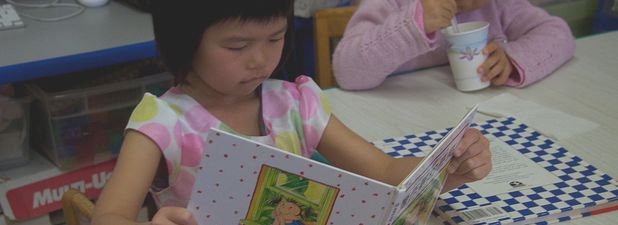introduction
Professional Development Session
Format: Mixed model, 2 hour interactive session
Prior to the session: Read selected state publication pages, the book chapter and position statements, presentation, and handouts. View streaming videos with Dr. Judith Schickendanz.
During the session: Participants engage in activities to deepen their knowledge of language and literacy development.
Language is one of the most crucial tools that children acquire, one that is essential for cognitive development, reading achievement, and overall school performance, as well as for social relations. Though children begin to develop language and literacy at birth, with nonverbal cues such as eye gaze and gestures, they arrive at preschool ready to communicate with symbols: words, signs, and pictures. (California Preschool Curriculum Framework, Volume 1, p. 98). An assumption underlying the language and literacy foundations is that children should experience the kinds of interactions, relationships, activities, and play that research has shown to support successful learning and development. (California Preschool Learning Foundations, Volume 1, p. 47).
This module provides an overview of the underlying research upon which the foundations and framework are based. Subsequent sections will focus more deeply on each of the three language and literacy strands: Listening and Speaking, Reading, and Writing. Prior to the session, participants read selections from state publications, access and read the book chapter, position statement and handouts, and view presentations and streaming video. During the interactive session, participants identify what they see as the top ten essential messages from the readings and video presentations.
Resources
 | State PublicationsCalifornia Preschool Learning Foundations, Volume 1, pp. 47-55California Preschool Curriculum Framework, Volume 1, pp. 98-103 |
 | Book Chapter and Position PapersCopple, C., & S. Bredekamp, eds. 2009. Developmentally Appropriate Practice in Early Childhood Programs Serving Children from Birth through Age 8. 3rd ed. Washington, DC: NAEYC. pp. 142-148 International Reading Association and the National Association for the Education of Young Children. 1998. Learning to read and write: Developmentally appropriate practices for young children, a joint position paper. National Association for the Education of Young Children and International Reading Association. 2008. Where We Stand on Learning to Read and Write; a summary. |
 | PresentationsLanguage and Literacy Foundations and Framework (CPIN) Early Language and Literacy: Classroom Observation ELLCO Literacy for All Children (CPIN) Supporting Literacy Development in the Preschool Classroom by Judith Schickendanz |
 | HandoutsLanguage and Literacy Foundations at a Glance (CPIN) Map of the Foundations (CPIN) |
 | Streaming VideoCPIN Event—Dr. Judith Schickedanz – Supporting Literacy Development in the Preschool Classroom Center for Early Literacy Learning. CELLvideos.
|


